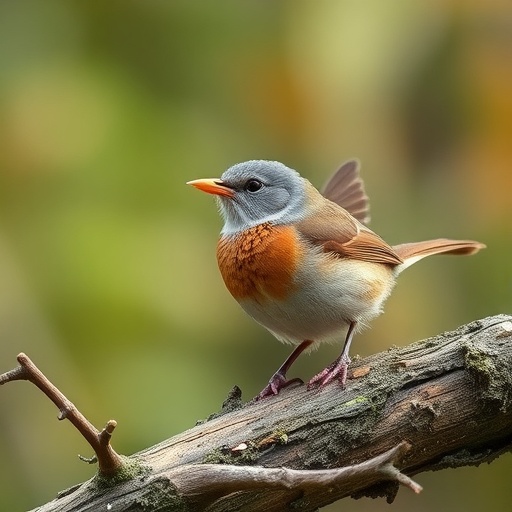The intricate relationship between forests and their seed-dispersing animals plays a critical role in maintaining ecological balance and mitigating climate change. Recent research emphasizes that a staggering 90% of trees in biodiverse regions like the Amazon and the Atlantic Forest depend on animals for seed dispersal, highlighting the interconnectedness of life. In an age of rapid climate change and habitat destruction, the decline of these frugivorous species presents a problem that reaches far beyond the species themselves; it shakes the very foundations of forest ecosystems and carbon sequestration processes.
As various species of birds, mammals, and even fish engage in the act of seed dispersion, they facilitate not only the reproduction of individual plants but also support the greater ecosystem services that forests provide. The alarming reality is that populations of these indispensable animals have plummeted in recent years. A decline in frugivorous creatures directly affects the composition of forests, thereby dismantling their ability to absorb atmospheric CO2. This amplifies climate change, yet conservation strategies often neglect these crucial players in ecosystem dynamics.
Mauro Galetti, a notable ecologist and director of the Center for Research on Biodiversity Dynamics and Climate Change in Brazil, elucidates on the vital role of seed-dispersing animals. He succinctly raises the question: who “plants” the carbon? Species such as toucans and agoutis are not mere animals; they are pivotal actors in the clarity of our planet’s ecological narrative. For every copious forest, there exists a complex web of mutual dependencies linking specific species of plants with their required seed dispersers. Galetti’s plea is straightforward: include frugivorous animals in biodiversity conservation and forest restoration strategies. It is a request underpinned by profound scientific evidence detailing the contributions of these animals to forest carbon storage.
.adsslot_cCjKR2Uiol{width:728px !important;height:90px !important;}
@media(max-width:1199px){ .adsslot_cCjKR2Uiol{width:468px !important;height:60px !important;}
}
@media(max-width:767px){ .adsslot_cCjKR2Uiol{width:320px !important;height:50px !important;}
}
ADVERTISEMENT
The impetus behind the urgent call for attention is not simply theoretical. A recent study published in Nature Reviews Biodiversity articulates the catastrophic implications of losing these animal populations. The paper reveals that declining frugivorous fauna worldwide has resulted in a staggering 60% reduction in effective seed dispersion. As the pressures of modernity march on, leaves us pondering whether we have taken this ecological service for granted. Galetti emphasizes that understanding individual plants and ecosystem vulnerabilities to seed dispersers is paramount to confronting this growing issue.
An often-overlooked facet of seed dispersal is the unique interaction between frugivorous animals and the seeds they carry. When an animal consumes fruit, it undergoes a transformation that prepares the encapsulated seeds for germination. While passing through the digestive tract, seeds receive chemical treatment from gastric juices, or mechanical action from specific anatomical features, like a bird’s gizzard. These processes allow for quicker germination and a better chance of survival in various environments. The coexistence of animal and plant life is not a mere thanksgiving to ecological dynamics; it is a dance of evolutionary adaptations, aware and finely tuned to one another.
The Brazil nut tree presents an exemplary case of this intricate relationship, as its seeds rely exclusively on the agouti for dispersion. The agouti’s potential extinction in a local habitat directly threatens the population of the Brazil nut, underscoring the fragility of these interdependencies. In ecosystems such as the Atlantic Forest, birds, bats, and monkeys dominate as seed dispersers, while in aquatic systems like the Amazon, fish such as pacu and tambaqui also undertake the essential task of seed distribution. Each species’ unique adaptations manifest in earth’s diverse locales where they contribute to different facets of ecological interactivity.
Beyond their reproductive role, frugivorous animals also embody a pressing concern for biodiversity conservation strategies. While the loss of pollinators often garners immediate public attention due to their vital role in food production, the implications of seed disperser decline are more gradual and complex. The challenge lies in measuring their contributions to long-term biodiversity and carbon storage. Consequently, rising awareness of this issue is critical for restoring and preserving ecological balances.
Galetti addresses this disparity by noting that the economic ramifications of seed disperser declines—such as reduced forest products, compromised carbon storage, and diminished resilience against extreme environmental events—have yet to be adequately quantified globally. Traditional restoration efforts are failing to account for the essential role of these animals, and the belief that planting trees alone will remedy the situation is fundamentally misguided.
Successful restoration requires a more nuanced understanding of the ecosystem as a whole. Thinking about the future of any forest relies not just on the preliminary act of planting but on ensuring the presence of the creatures that will sustain them. New models and syntheses in ecological research are emerging, shedding light on large-scale functional changes and long-term consequences tied to declining animal populations. Addressing the phenomenon of seed disperser decline proves vital to preserving animal biodiversity and ensuring healthy, resilient ecosystems.
The path forward is not straightforward, but it is clear: we must harness our understanding of ecological interdependencies to safeguard the myriad connections at play. In doing so, we open pathways for rejuvenation and recovery of our forests, emphasizing the importance of sustaining the animal species instrumental in maintaining these complex networks of life. As the scientific community amplifies the chorus for action, the message is clear: the survival of our forests intricately depends on the fate of their unseen, often neglected heroes.
Subject of Research: The importance of seed-distributing animals in biodiversity conservation
Article Title: Drivers and impacts of global seed disperser decline
News Publication Date: 19-May-2025
Web References: Nature Reviews Biodiversity
References: None provided
Image Credits: Mauro Galetti/CBioClima
Tags: biodiversity in the Amazoncarbon sequestration processesClimate Change Mitigationconservation strategies for wildlifedecline of seed-dispersing animalsecological balance forest ecosystemseffects of species decline on forestsimpact of habitat destructionimportance of frugivorous speciesinterdependence of species in ecosystemsMauro Galetti ecological researchrole of animals in seed dispersion





